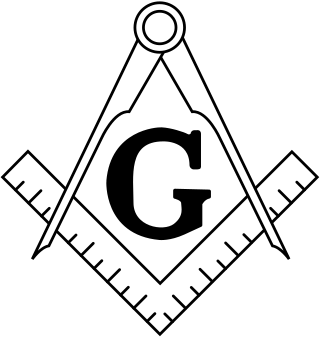
Freemasonry or Masonry refers to fraternal organisations that trace their origins to the local guilds of stonemasons that, from the end of the 14th century, regulated the qualifications of stonemasons and their interaction with authorities and clients. Modern Freemasonry broadly consists of two main recognition groups: Regular Freemasonry, which insists that a volume of scripture be open in a working lodge, that every member professes belief in a Supreme Being, that no women be admitted, and that the discussion of religion and politics do not take place within the lodge; and Continental Freemasonry, which consists of the jurisdictions that have removed some, or all, of these restrictions.
The history of Freemasonry encompasses the origins, evolution and defining events of the fraternal organisation known as Freemasonry. It covers three phases. Firstly, the emergence of organised lodges of operative masons during the Middle Ages, then the admission of lay members as "accepted" or "speculative" masons, and finally the evolution of purely speculative lodges, and the emergence of Grand Lodges to govern them. The watershed in this process is generally taken to be the formation of the first Grand Lodge in London in 1717. The two difficulties facing historians are the paucity of written material, even down to the 19th century, and the misinformation generated by masons and non-masons alike from the earliest years.
In Freemasonry, regularity is one of the factors by which individual Grand Lodges judge whether to recognise one another for the purposes of allowing formal interaction at the Grand Lodge level and visitation by members of other jurisdictions. Each individual Grand Lodge determines which other Grand Lodges it considers Regular.
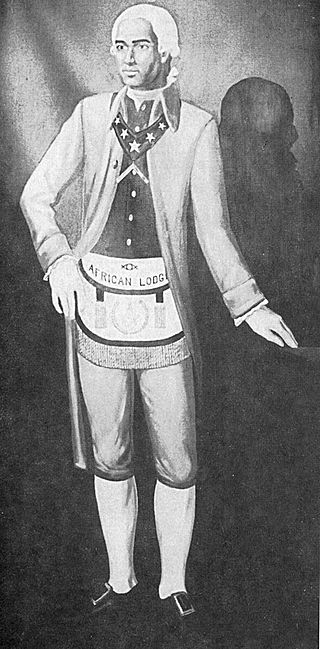
Prince Hall was an American abolitionist and leader in the free black community in Boston. He founded Prince Hall Freemasonry and lobbied for education rights for African American children. He was also active in the back-to-Africa movement.
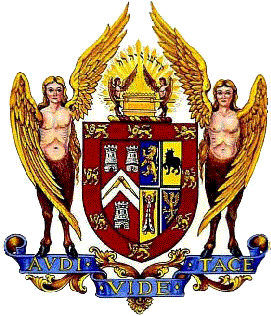
The United Grand Lodge of England (UGLE) is the governing Masonic lodge for the majority of freemasons in England, Wales, and the Commonwealth of Nations. Claiming descent from the Masonic Grand Lodge formed 24 June 1717 at the Goose & Gridiron Tavern in London, it is considered to be the oldest Masonic Grand Lodge in the world, together with the Grand Lodge of Scotland, and the Grand Lodge of Ireland.
Prince Hall Freemasonry is a branch of North American Freemasonry for African Americans founded by Prince Hall on September 29, 1784. There are two main branches of Prince Hall Freemasonry: the independent State Prince Hall Grand Lodges, most of which are recognized by State grand lodges, and those under the jurisdiction of the National Grand Lodge. Prince Hall Freemasonry is the oldest and largest predominantly African-American fraternity in the United States.
A Grand Lodge, also called Grand Orient or by another similar title, is the overarching governing body of a fraternal or other similarly organized group in a given area, usually a city, state, or country.

The Most Worshipful Grand Lodge of Ancient Free and Accepted Masons of the Commonwealth of Massachusetts, commonly referred to as the Grand Lodge of Massachusetts and abbreviated GLMA, is the main governing body of Freemasonry within Massachusetts, and maintains Lodges in other jurisdictions overseas, namely Panama, Chile, the People's Republic of China, and Guantanamo Bay Naval Base, Cuba.
While many Christian denominations either allow or take no stance on their members joining Freemasonry, others discourage or prohibit their members from joining the fraternity.
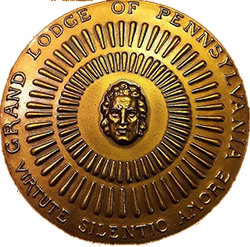
The Grand Lodge of Pennsylvania, officially The Right Worshipful Grand Lodge of the Most Ancient and Honorable Fraternity of Free and Accepted Masons of Pennsylvania and Masonic Jurisdictions Thereunto Belonging, sometimes referred to as Freemasons of Pennsylvania, is the premier masonic organization in the Commonwealth of Pennsylvania. The Grand Lodge claims to be the oldest in the United States, and the third-oldest in the world after England and Ireland, having been originally established as the Provincial Grand Lodge of Pennsylvania in 1731. This claim is disputed by both the Grand Lodge of Massachusetts and the Grand Lodge of Virginia.
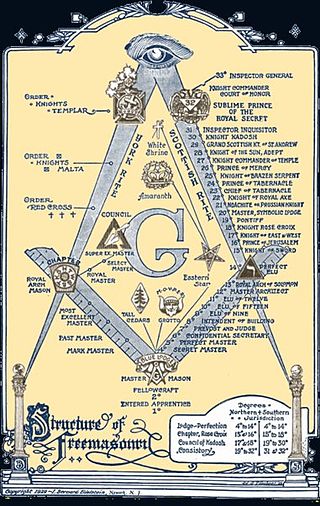
There are many organisations and orders which form part of the widespread fraternity of Freemasonry, each having its own structure and terminology. Collectively these may be referred to as Masonic bodies, Masonic orders, Concordant bodies or appendant bodies of Freemasonry.
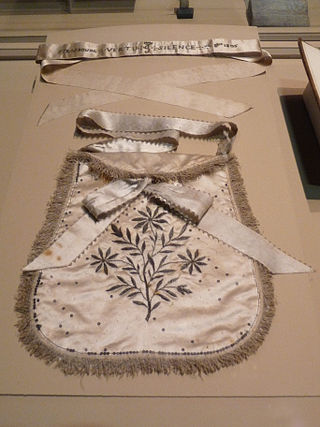
Freemasonry has had a complex relationship with women for centuries. A few women were involved in Freemasonry before the 18th century, despite de jure prohibitions in the Premier Grand Lodge of England.

The Grand Lodge of Free & Accepted Masons of Indiana is one of two statewide organizations that oversee Masonic lodges in the state of Indiana. It was established on January 13, 1818. The Grand Lodge of Indiana's offices and archives are located in the Indianapolis Masonic Temple. The historically black Most Worshipful Prince Hall Grand Lodge of Indiana F&AM is the second regular Masonic grand lodge in the state, and it was originally established in 1856 as the Independent Union Grand Lodge of Free and Accepted Masons of the State of Indiana. The two grand lodges agreed to mutual recognition in May 1998, and they jointly share sovereignty over the Masonic fraternity in Indiana.

The Grand Lodge of Ohio, formally known as the Grand Lodge of Free & Accepted Masons of Ohio, is the governing body of the largest group of Masonic lodges in Ohio. The Grand Lodge of Ohio follows the Anglo-American tradition of Freemasonry that is common in the United States. In 2023, the Grand Lodge reported a total membership of 75,000 Master Masons.

A Masonic Temple or Masonic Hall is, within Freemasonry, the room or edifice where a Masonic Lodge meets. Masonic Temple may also refer to an abstract spiritual goal and the conceptual ritualistic space of a meeting.
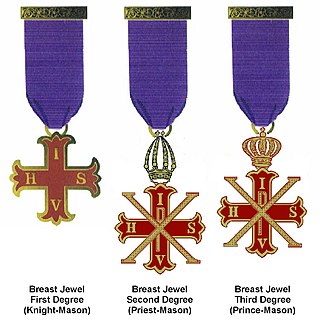
The Red Cross of Constantine, or more formally the Masonic and Military Order of the Red Cross of Constantine and the Appendant Orders of the Holy Sepulchre and of St John the Evangelist, is a Christian fraternal order of Freemasonry. Candidates for the order must already be members of Craft Freemasonry (lodge) and Royal Arch Freemasonry (chapter); they must also be members of the Christian religion, and proclaim their belief in the Christian doctrine of the Holy Trinity.
The Sons of Haiti is a Haitian-American Masonic Grand Lodge and fraternal organization with headquarters in Renton, Washington.

The Iowa Masonic Library and Museum, located in Cedar Rapids, Iowa, United States, is one of the largest Masonic libraries in the world and incorporates at least three museum collections. The library was the first, worldwide, to have its own building, which was constructed in 1884. Its current building, constructed in 1955, also houses the administrative offices for the Grand Lodge of Iowa, one of the governing bodies for Freemasonry in Iowa.
The Most Worshipful National Grand Lodge Free & Accepted Ancient York Masons Prince Hall Origin National Compact USA is a body of Masonry in the United States of America composed predominantly of African American Freemasons. It governs Grand Lodges within the United States and the Commonwealth of The Bahamas.
Freemasonry in the United States is the history of Freemasonry as it was introduced from Britain and continues as a major secret society to the present day. It is a fraternal order that brings men together to gain friendship and opportunity for advancement and community progress. It has been nonpolitical except for a period around 1820 when it came under heavy attack in the Northeast. That attack reduced membership, but it recovered and grew after 1850. Growth ended in the late 20th century and membership has declined.














